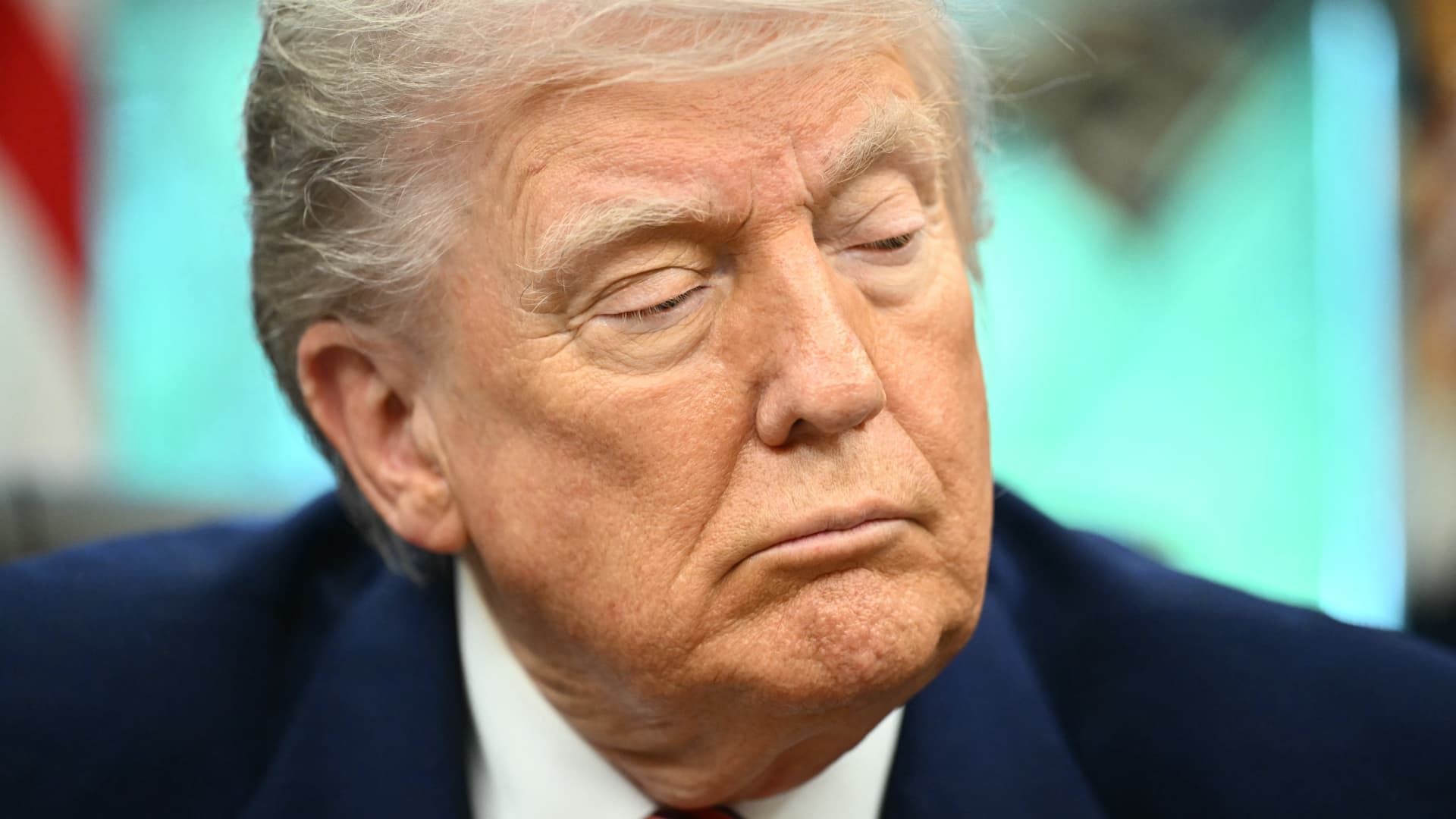US President Donald Trump prepares to sign executive orders in the Oval Office of the White House in Washington, DC, on May 23, 2025.
Mandel Ngan | Afp | Getty Images
President Trump‘s social media tariffs threats against Apple and the European Union reflect a worrying issue for the markets and economy, according to trade experts and logistics experts: the negotiating process isn’t going the way Trump wants.
“Trump is not wrong that the EU has been less forthcoming than other countries, but the EU also has good reason to be reluctant to engage in this kind of exercise, and so they are at an impasse,” said Josh Teitelbaum, senior counsel of Akin. “Trump’s frustration reflects that underlying dynamic,” he said.
Apple, threatened by Trump on Friday with a 25% tariff on any iPhone not made in the U.S., is in a difficult spot, Akin said, as the broader investigation launched by the Trump administration on national security threats linked to key technology, and imports of semiconductors and derivative products, could put iPhones under its umbrella. “He has a mechanism to make good on this threat,” Akin said.
But with Europe, the tariff runs the risk of adding damage to a key trade relationship which had been showing signs of recovery. Ocean freight bookings tracked by SONAR show after a drop in bookings from the EU to the U.S., ocean freight bookings have steadily recovered. The fear is the new threat will slow down freight orders again.
Andy Abbott, CEO of Atlantic Container Line, an ocean carrier that specializes in the Europe-to-US trade, said that has significant implications for core U.S. industrial operations. Unlike Asia, which is primarily a supplier of consumer products to the U.S., Europe is mostly a source of industrial products that help American manufacturers produce.
“Europe was stable and steady,” said Abbott. “A big tariff on European imports will backfire, making American products more expensive to produce,” he said.
Manufacturers have stressed to the Trump administration in talks that any tariffs need to take into account the cost of running and expanding operations in the U.S., and the administration’s policy may run counter to the reshoring aim.
In addition, U.S. exporters will suffer as a result of reduced trade. Container rates to Europe are only one-third of U.S. import container freight rates, so a reduction of European imports will raise U.S. export rates, adding more cost to American products overseas, Abbott said.
“The EU is a significant trading partner, and a 50% tariff would potentially cause economic harm and the EU could retaliate, which would further escalate the economic harm,” said Timothy Brightbill, partner at Wiley and co-chair of its international trade practice. “It’s a dangerous situation.”
According to Dan Anthony, president of Trade Partnership Worldwide, the impact would vary across the U.S., but would be felt state to state.
“Needless to say, a 50% tariff would be a huge, costly tax increase,” Anthony wrote in a LinkedIn post.
According to his organization’s data, tariffs paid at the state level last year range from a low of 0.23% (Indiana) to a high of 2.36% (New Jersey) based on the types of products imported.
“Implementing a 50% tariff represents an effective rate increase of 20-200x depending on the state,” he said.
Brightbill said the EU has a significant number of trade barriers, and this trade negotiation could provide an opportunity for both agricultural and digital trade.
“There are many long-standing trade problems with the EU, for years and years, and I think that is why the administration wants the EU to come to the table,” Brightbill said. But he added that doesn’t ensure the EU responds in the way Trump is looking for. “There are a lot of countries and a lot of varying degrees of views on whether to negotiate in the first place, so, it will be very difficult to reach a consensus,” he said.






